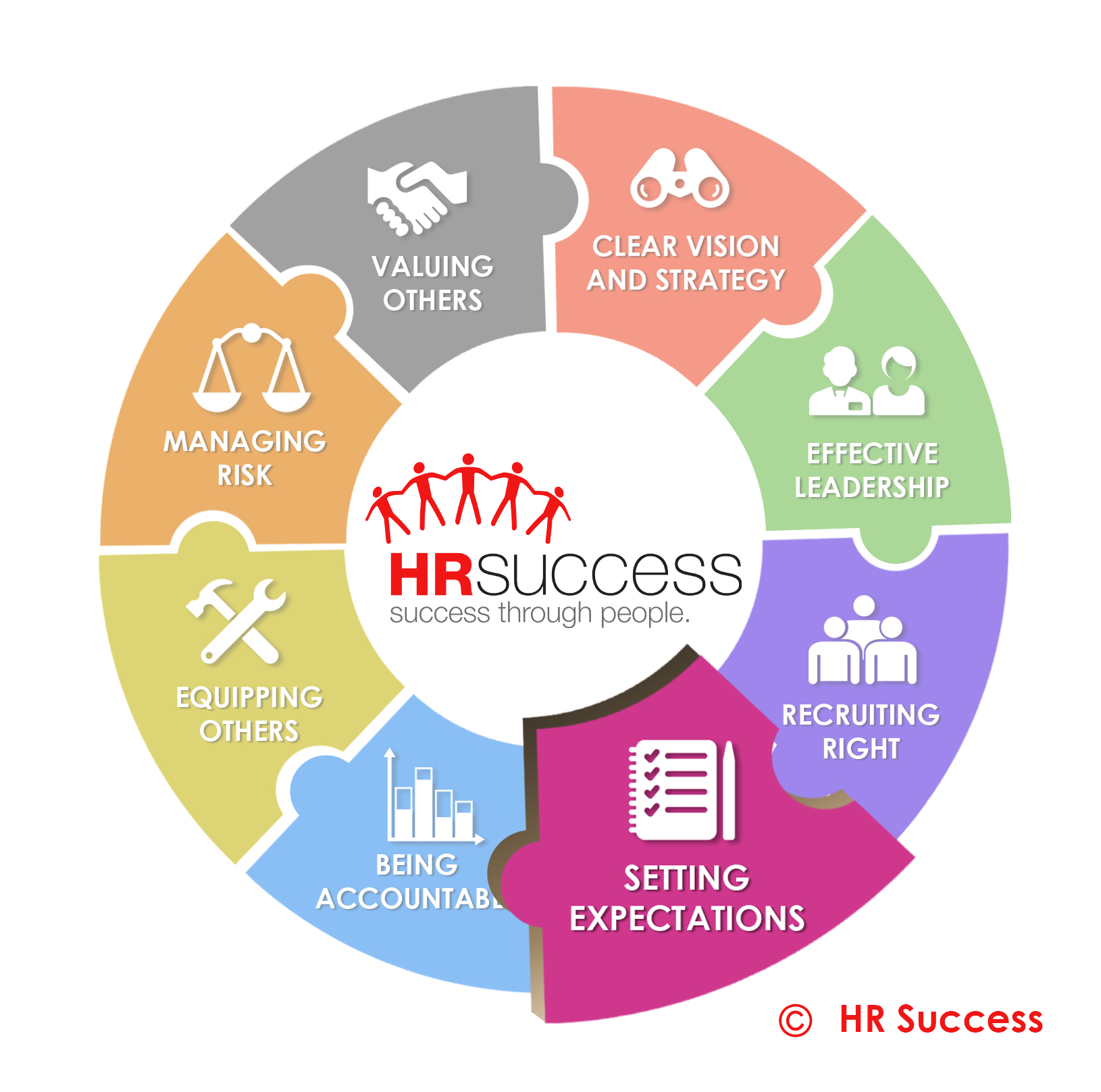
GREG MITCHELL
SUCCESS THROUGH PEOPLE SERIES
In this series of articles, Greg Mitchell (Principal of HR Success) highlights their exclusive 8 Elements to Success through People© Model, designed to create and sustain engaging, productive workplaces that drive business success.
“Don’t lower your expectations to meet your performance. Raise your level of performance to meet your expectations” – Ralph Marston
IN our experience, many business owners and managers who express frustration in relation to employee performance have just not made their expectations clear enough.
Indeed, it’s fairly routine for us to hear a comment from a business owner or manager along the following lines when we start exploring their people-management challenges:
“The biggest problem is that people just won’t bloody well do what I want them to do! I spend my whole-time fixing mistakes, dealing with staff and customer complaints, and managing poor performance. It stops me doing what I really need to do which is get out there and grow my business!”
The most successful businesses take opportunities throughout the employment lifecycle to set and reinforce clear expectations with their employees. Opportunities to do so include when:
- Drafting and reviewing position descriptions.
- Undertaking recruitment, selection and induction activities.
- Generally communicating with staff, individually and/or collectively.
- Completing performance reviews, and
- Making decisions relevant to staff recognition and rewards.
To get some idea as to how your business is presently positioned in relation to Setting Expectations rate each of the following items on a scale of 1 to 5, with 1 being “not at all”, and 5 being “to a great extent”.
To what extent….
- Are there up-to-date position descriptions for all roles within the business?
- Does the business have a structured induction process for setting expectations of new staff?
- Are clear goals/targets established for each member of staff?
- Are performance plans and reviews linked to the overall strategy/plans of the business?
- Do you think staff have a clear understanding of what they are accountable for?
Total your responses to calculate your score out of a potential maximum of 25. The lower your score the more opportunities there are to improve your business!
Consider these Tips:
- Ensure that current position descriptions are in place for all roles (worryingly, a CPA Australia survey found that less than 50% of SMEs in Australia have position descriptions in place for all roles)
- Develop and communicate a formal list of delegations to clarify the authority levels of individuals in relation to, for example, financial, and HR-related responsibilities.
- Develop and apply a structured process to induct new staff into the business, ensure that expectations are clear, and bring them up to speed as quickly as possible.
- Ensure supervisors and managers regularly and effectively provide feedback to their team members to reinforce expectations.
- Develop and effectively communicate and maintain a clear set of policies and procedures to guide staff actions (e.g. Code of Conduct, leave and attendance policy, bullying and harassment-free workplace policy).
Curious as to how your business or team is performing in terms of the other 7 elements of the model? Check out our free, confidential diagnostic today – www.hrsuccess.com.au/diagnostic. Greg Mitchell is principal consultant at HR Success.


